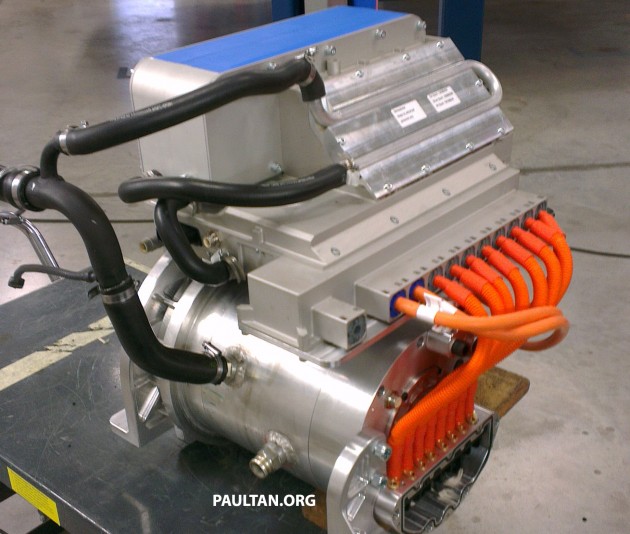First of all, watch the video above. Look at how that Proton Satria Neo goes, and with nary a sound too, other than the front tyres struggling to grip the ground and that subtle electric motor whine as it puts its power to the ground through a single speed gearbox.
This is an experimental vehicle done up by Punch Powertrain, the company that supplies Proton its CVT transmissions. This particular car wasn’t commissioned by Proton as part of any project. According to a Punch representative, they picked the Satria Neo because they liked how it looked.
Under the hood is an electric motor that does 100 kW (about 134 hp) and 220 Nm of torque – the best part of all is that like all electric motors, peak torque is achieved at all rev ranges, so you get the full shove the moment you put your foot down on the throttle.
The 660V electric motor is of the switched reluctance type, which is one of various types of electric motors such as induction type and permanent magnet synchronous motors. SR motors are apparently cheaper to manufacture, and are also simpler in construction.
Like most EVs, it uses a single speed gearbox, because of the electric motor’s torque spread. However, Punch also has a two-speed gearbox for car manufacturers who want to maximise both efficiency and performance. The whole system is designed to be very compact and Punch says the electric powertrain is ready to be developed if a customer is interested.
We earlier saw a prototype electric car based on the Proton Iriz showcased in South Korea, but that was developed by LG.
AD: Drive the Proton model of your dreams. Submit your details and Proton PJ will get in touch with you.
Looking to sell your car? Sell it with Carro.





















AI-generated Summary ✨
Comments generally express admiration for the Proton Satria Neo EV project, praising its impressive handling and chassis, with some noting it as an enthusiast's car despite interior and ergonomics shortcomings. Several commenters highlight Punch Powertrain's involvement and appreciate the choice of the Neo for its design and packaging. Some skeptics question the practicality of EVs in Malaysia's flood-prone areas and criticize Proton's R&D efforts, but overall, there is a sense of pride in the Neo’s engineering and performance. A few comments mention potential future enhancements, such as turbo engines or new models, emphasizing that the project showcases innovative technology. Overall, the sentiment is a mix of admiration, nostalgia, and hope for further development.